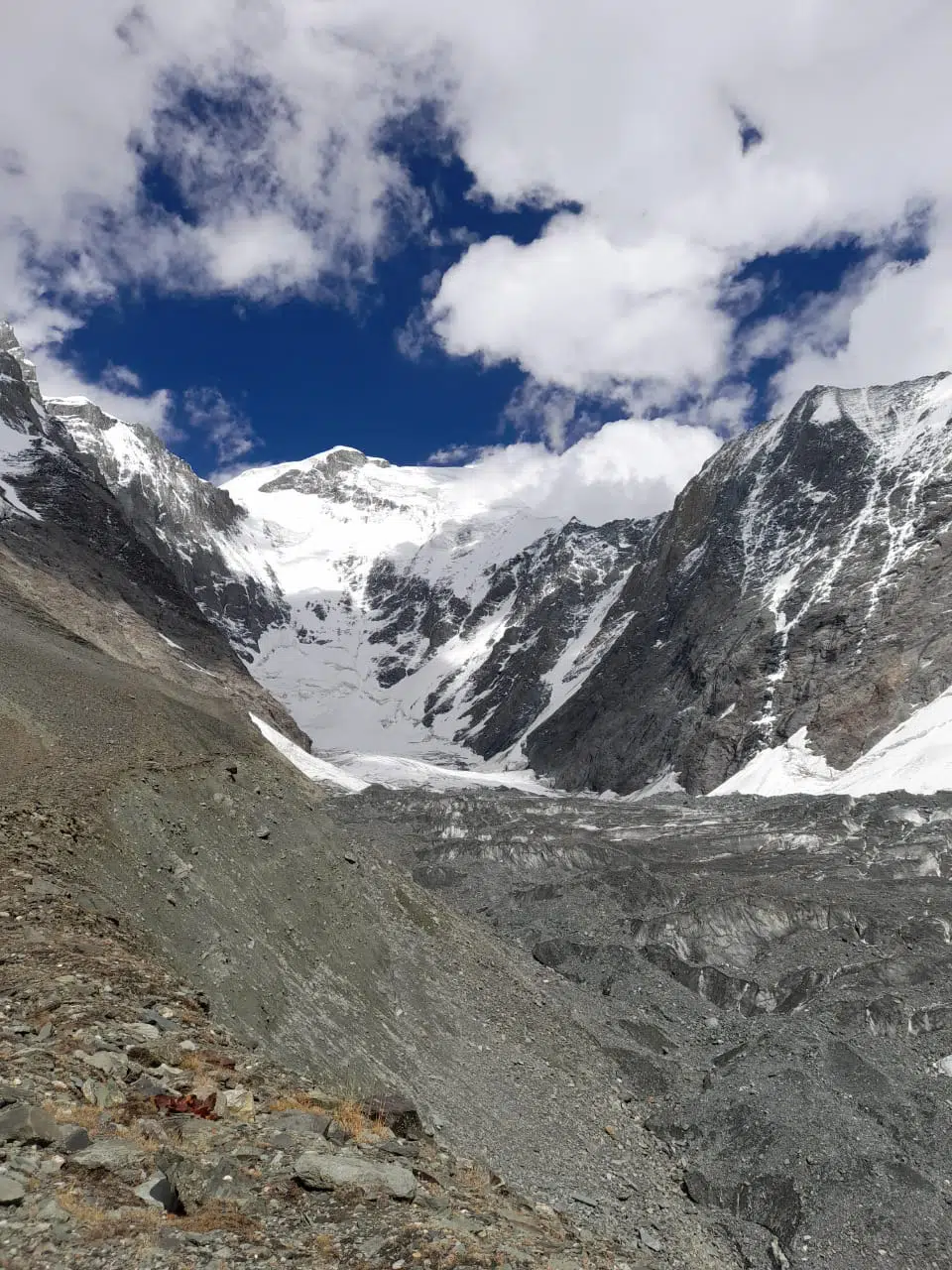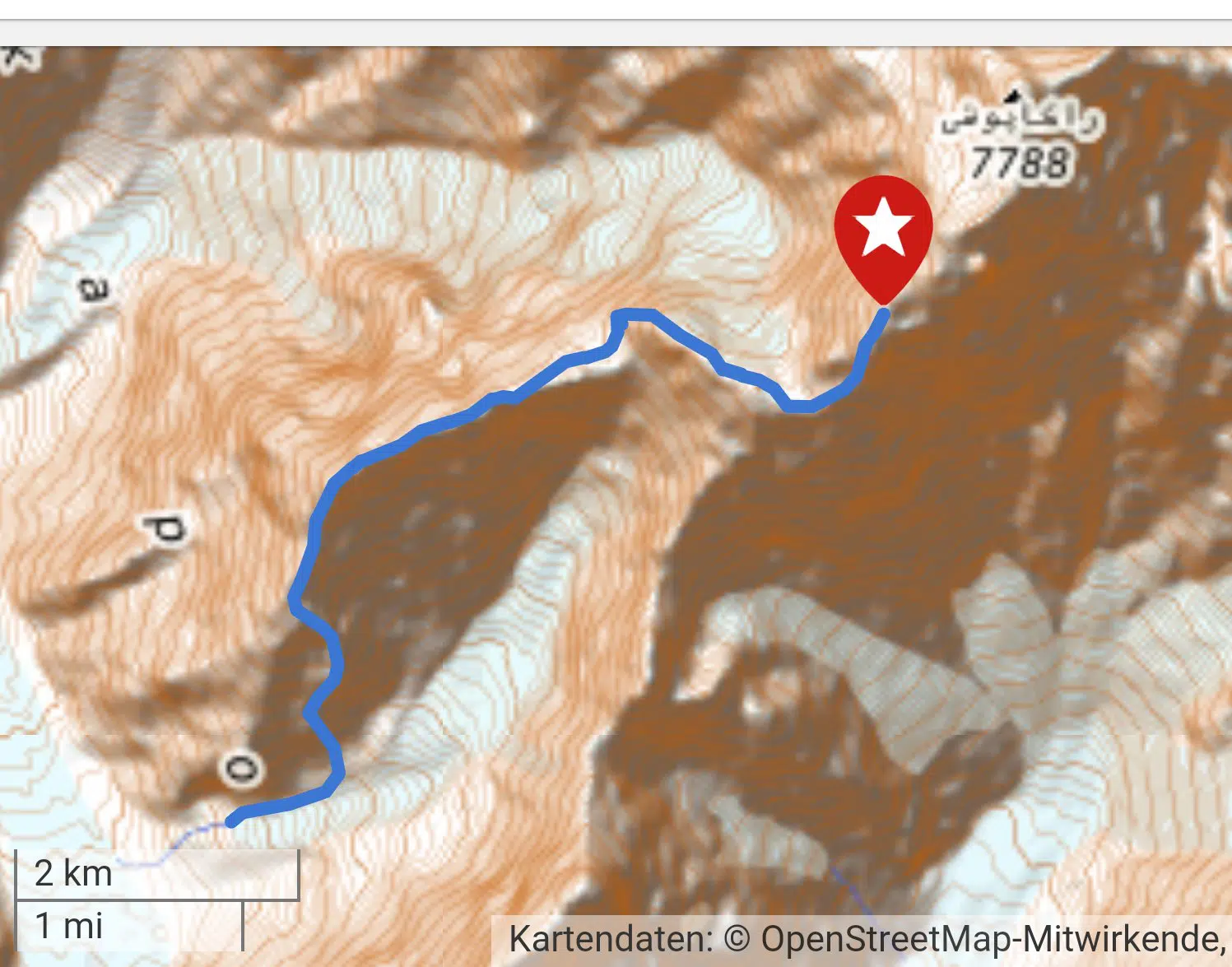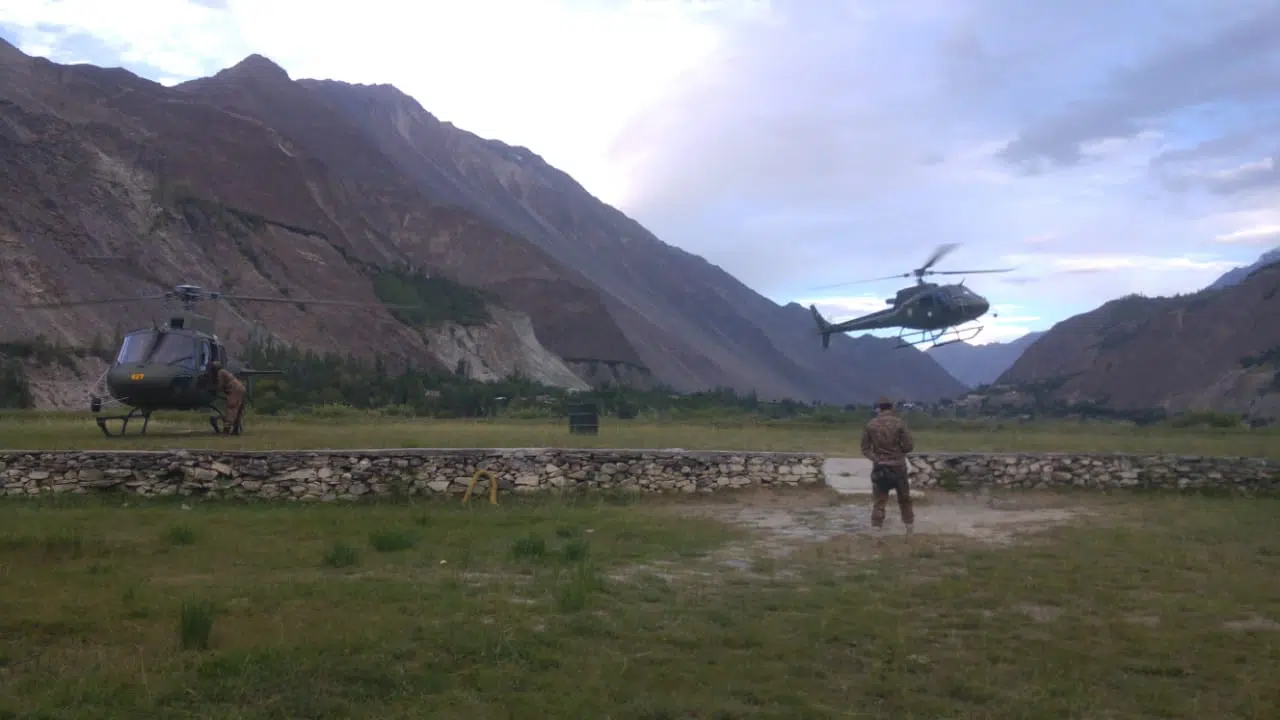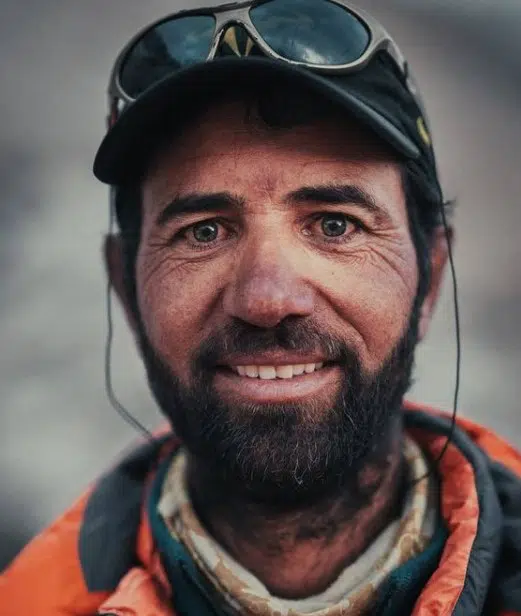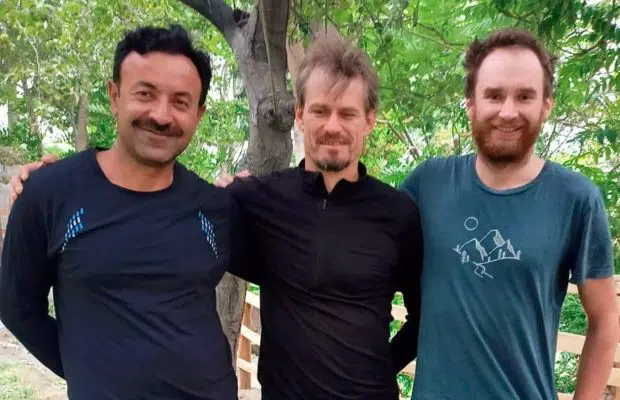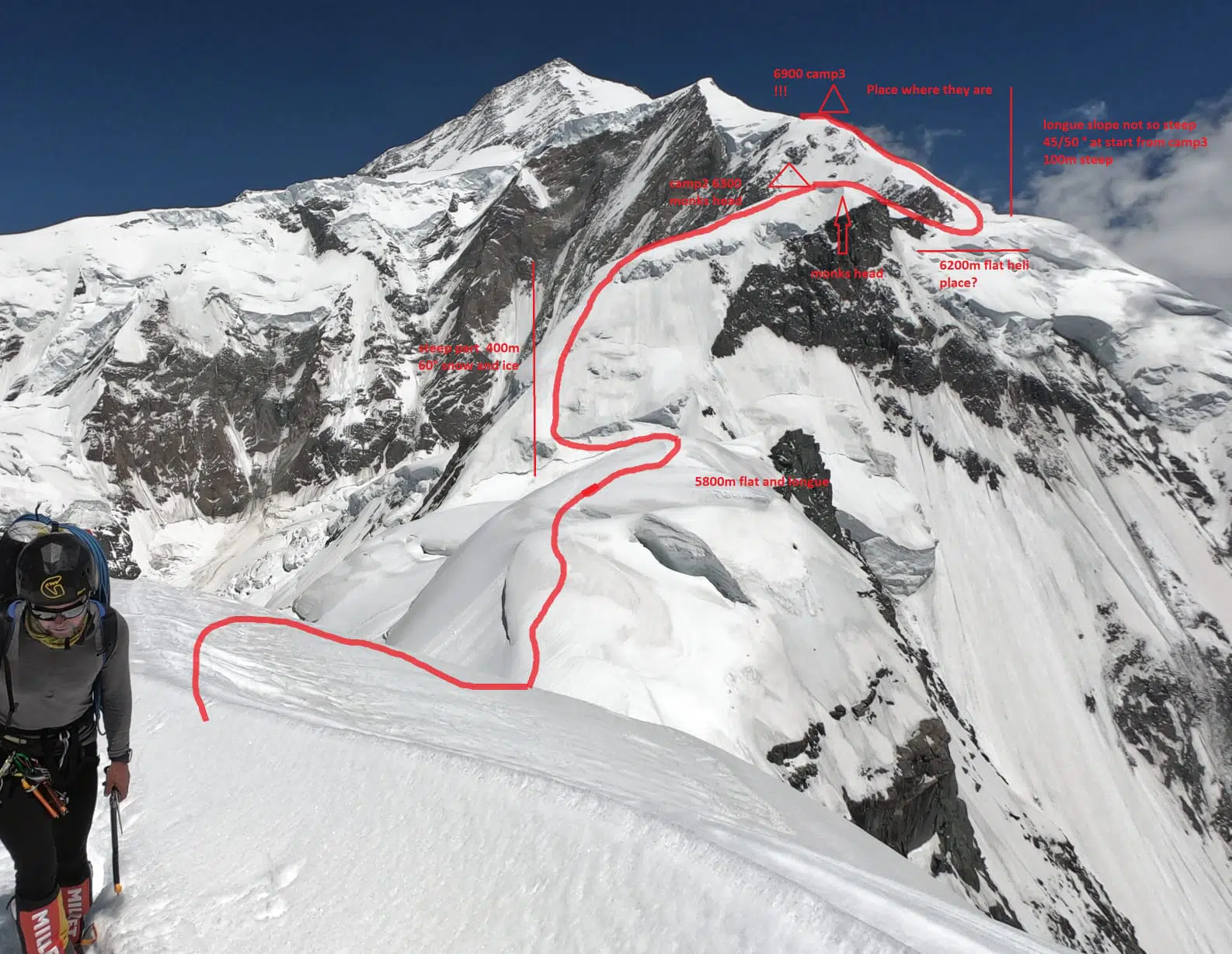An SOS call last Saturday from three climbers trapped at 6,900m on Rakaposhi (7,788m ) has triggered one of the biggest rescue operations in Pakistan’s mountaineering history, and an even bigger ethical debate and financial mess, since the team was climbing without a permit.
Climbing somehow off-season, the expedition would have passed unnoticed if not for one of the members, Pakistani Wajidullah Nagri, whose progress got some echo in local press. Nagri joined forces with two climbers from the Czech Republic, barely mentioned and referred to as “Jakub and Peter”.
[Updated on september 15, 9 AM]
The sunning Rakaposhi, rising right north of Gilgit town and visible from some sections of the Karakorum Highway, is one of the most photographed peaks in the country. When Nagri and is friends launched the summit bid, Gilgit citizens were invited to use a zoom lens to follow the climbers’ headlamps up the summit ridge live from their homes.
Yet, Rakaposhi is anything but straightforward. The 12th highest peak in Pakistan, it’s also the only mountain in the world with 5,000 vertical meters to cover straight up between base camp and summit. No wonder, it is rarely attempted and it has only three complete routes recorded.
Again, it was Nagri who called home from the summit and then contacted again as they started descending at about 5pm. On the following morning, they asked for a rescue, and questions started.
As it was unveiled, no one had much idea about the route the climbers had followed, if they had higher camps, ropes, etc. Almost immediately, local travel operators aired bitter complaints about the expedition being on the mountain irregularly. Alpine Club of Pakistan confirmed that the expedition had no climbing permit granted. The Czechs were insured with Europe Assistance Prague, although, according to Pakistan’s press, hard negotiations were required after the company initially refused to foot the bill when they found out of the irregularities.
Climbers’ location at 6,900m – today they have managed to lose 600 vertical metres. ©OpenStreetMap
Helicopters: the Key factor in Pakistan rescues
Aerial rescue operations in Pakistan are performed exclusively by Pakistan’s Army pilots, and their fees are close to 20,000 US$ per flight. They always have two helicopters flying in pair for safety reasons but, otherwise, the Pakistani Pilots are extremely skilled, as they have shown in countless rescues at very high altitudes.
As usual, news of mountain drama attracted audiences. An increasing number of users in the very active environment of Pakistan’s social media claimed for local climbers to go and help as a sign of mountaineering grandeur. Some pointed out Pakistan should stand to the challenge and avoid the ever irritating comparison with Nepal’s Sherpas.
Last helicopter flight takes off today – it was supposed to drop dry clothes and a tent to the clmibers at 6,300m but were forced back by cloudy weather. ©All rights reserved
Abdul Joshi, Karim Hayat and Eid Karim were the first ones to step ahead. They were dispatched to Gilgit from their respective home towns. No less than four helicopters set their base in Gilgit. No matter how willing and brave, the local climbers were not acclimatized and unfamiliar with the route. In such circumstances, the aerial operation would be the key factor.
Hence, the highly skilled pilots took away every non-essential element in the machines (doors and seats included) to fly as high as possible and, on Sunday, they managed to hover above the stranded climbers. First reports indicated that, while Nagri was in a good state, the Czech climbers, finally identified as Jakub Vlcek and Petr Macek, suffered from frostbite to some extent and AMS.
The team members were stuck in a small tent but reportedly unable to move any further down. Below them there was a steep section where they had fixed no ropes on the way up, and now they felt not confident enough to tackle the descent.
However, weather conditions and the difficulties of the route – in the end, the team had followed the classic British route up the SW Ridge – prevented all attempts to pick the injured climbers or to drop rescuers somewhere on the ridge.
On Monday, similar attempts followed and failed again. At least, a final chopper flight at evening was able to drop a bag with ropes and supplies near the climbers’ tent. Tuesday, further choppers brought local celebrity Sajid Sadpara, fresh from summiting K2 (and finding the remains of his father, perished in the mountain the previous winter) and escorted by two other climbers from his village.
Go down or die
Still, the option of a ground rescue was far from optimal due to the length of the route. Starting at the bottom of the ridge, the climbers would need at least three days to reach the stranded climbers, fixing ropes and breaking trail as they went. Macek, Vlcek and Nagri would have to go down for their lives.
Strengthened by the extra food and water, and encouraged by the team at the base, finally the climbers have set off and started descending. They have managed to lose 600 vertical metres, aiming for a flat spot at 5,800m where helicopters might be able to pick them. However, they have finally stopped at 6,300m as clouds closed in and sunset approached, refusing to move any further down.
the final chapter of the story will be written
not on the slopes of Rakaposhi,
but in the offices of local authorities
Tomorrow, they will need to rappel down the steepest section of the route, a 60º snow and ice ramp between 6,200 and 5,800 to the flatter area. If they make it, they still may save their lives. But still will have to explain themselves in front of authorities, increasingly concerned with the growing number of high-altitude rescues they get involved in.
In fact, the final chapter of the story will be written not on the slopes of Rakaposhi, but in the offices of local authorities and in the wild forum of social media, where heated opinions are already echoing, about the need of professionally trained high altitude rescue patrols, a better control of climbing teams in the country’s mountain areas, and the unwritten rules of when a climber should call for a rescue or, instead, rely on experience and self-sufficiency to attain goals within their power and skills beforehand. In fact, the phenomenon is common to all mountain areas around the world, but in the case of Pakistan, it is still in a earlier stage, and exacerbated by extreme altitude.



